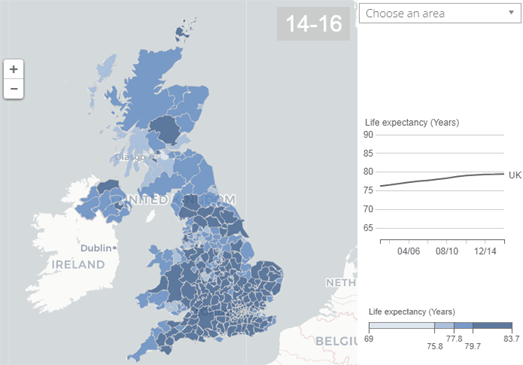The magnificent David Rumsey Collection has a new '
data visualization' subject field which allows you to search and explore some wonderful examples of early data visualizations. It features data visualizations by pioneers of information graphics, such as Charles Minard, Henry Beck and John B.Sparks.

One of my personal favorites in this data visualization collection is Levi W. Yaggy's
Geographical Definitions Illustrated. This vividly colorful educational chart was designed to be displayed in a classroom. The chart depicts examples of a wide range of geographical features, such as deltas, estuaries and harbors.

Charles Minard was a pioneer of the use of graphics in engineering and statistics. His most famous visualization was his
flow-map of Napoleon's disastrous Russian campaign. Minard's flow-map of Napoleon's 1812 Russian campaign isn't in the David Rumsey collection but the collection does have Minard flow-maps showing
global emigration in 1858,
the Atlantic trade in wool and cotton and the
movements of mineral fuels on railways and waterways.
In each of these maps scaled arrows are used to show the direction and scale of the movement of goods and/or people.

John B. Sparks'
Histomap of Evolution is a logarithmic timeline which visualizes ten thousand million years of evolution. The chart was an accompaniment to John B. Sparks equally ambitious
Histomap, which condensed 4000 years of human activity into one chart. The Histomap was 5 feet long and was sold in 1931, by Rand McNally, for $1.
This history of the world starts at the top of the Histomap in 2000 BC and progresses forward in time as you travel down the chart. The width of the various 'states, nations and empires' equates to their 'relative power' through history.
These are just a few examples which I found while browsing the David Rumsey Collection. If you are interested in data visualizations, information graphics or design then you will enjoy browsing the '
data visualization' subject field for yourself. I haven't even got around to discussing
Henry Beck's early London Underground maps or
Charles Booth's map of London poverty.
You might have noticed that all of these examples from the David Rumsey Collection are displayed using the LUNA viewer. In other words IIIF has been used to display each of these data visualizations. This means that you can display any of these visualizations yourself in a Leaflet map using the
Leaflet-IIIF plug-in. If you are interested in mapping any of these examples with Leaflet then you need to click on the 'share' link on its visualization page on the David Rumsey Collection. You can then click on the IIIF link to grab the URL for the IIIF manifest.


















































